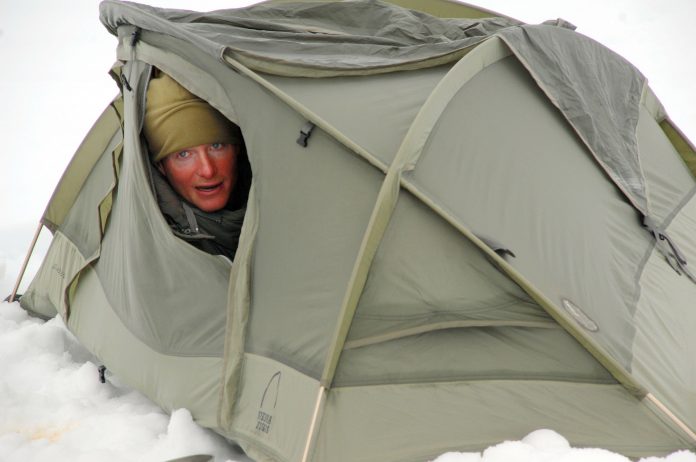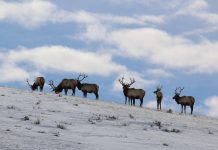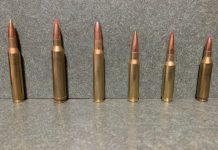Cold and moisture are likely the two most common causes of discomfort and danger in the outdoors. All too often, they like to work as a team to rob us of precious body heat. Depending on the resources available, warming up and getting dry can be simple and comfortable or difficult and miserable. In this article, I want to focus on a worst case scenario, where for one reason or another no outside heat source is available.
The primary method to get warm and dry is to use whatever insulation (sleeping bag, puffy jacket, etc) that is available, and use body heat to dry your body and clothing. There are several factors that determine how successful this method will be.
Disregarding the level of saturation, the first factor is clothing material. It is common knowledge that some materials hold less water and dry more quickly than others. Cotton is generally considered to be the worst and is unsuitable clothing for wilderness and extended hunts in my opinion. Polyester does quite well. It tends to hold a bit of water, but dries well and insulates when wet. Merino also will hold some water but maintains excellent insulating properties when wet. It isn’t the fastest drying but does dry reasonably quickly. Nylon takes on the least amount of water per its own weight and dries the fastest of the materials considered here.
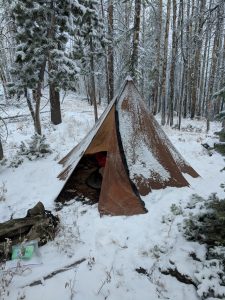
The insulation material needs to be taken into account as well. In general, there are two main options: down or synthetic. Down has been around for ages, and its characteristics are well known. It has an excellent warmth to weight ratio, lofts extremely well, but is susceptible to moisture. If it does happen to get wet and clump, it loses most or all of its insulating properties. Even moisture vapor from drying clothing or sweat can cause this issue. To combat this issue, manufacturers have created hydrophobic down treatments. In my experience, these treatments work very well. In most conditions, hydrophobic down will handle enough moisture to remain reliable. But it isn’t a complete failsafe, and for some conditions, synthetic insulation should be utilized.
Synthetic insulation has improved greatly in recent years. It handles moisture very well and also tends to breathe very well. Products like Climashield Apex require no quilting or baffles and insulate uniformly with no clumping or slumping of the insulation. On the downside, synthetic is heavier than down. It doesn’t compress as well and doesn’t loft as much either.
When drying out in a sleeping bag or quilt, body heat is the energy source to evaporate the moisture. The insulation serves to trap that heat, and speed up the drying process (along with keeping you warm). Once that moisture begins to evaporate, it has to go somewhere. The only place for it to go is out through the insulating layers. This is where down is at a slight disadvantage in two ways. First, it requires very dense fabric to hold the down in, and this hurts breathability. Second, the down can lose some of its insulating properties if it is affected by the moisture vapor. When that moisture makes it outside of the insulation, the cold air causes it to condense and stick to the outside of the insulation. This can cause further problems with down.
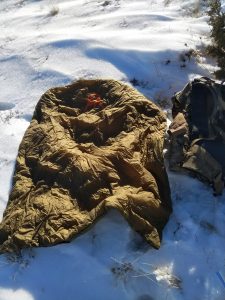
Another factor to consider is temperature rating. Early in the season, I tend to run a light insulating layer to save weight and bulk. Later in the season, I prefer to run a quilt/bag that is a bit overkill. Typically, this means going with one rated for at least 10* below the lowest expected temperature. This ensures that the insulation will hold enough body heat to dry clothing overnight.
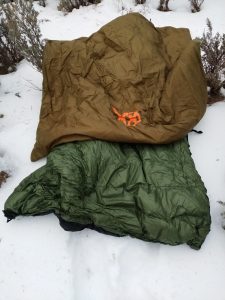
Being wet and cold can be an inconvenience or life-threatening. The most important thing anyone can do is keep their head on straight. Take stock of the situation and available resources. If a heat source, such as a stove or fire is available, that’s the best option. When that isn’t the case, insulation and body heat can both keep the hunter warm and dry their clothing. Utilizing the right materials and strategy will allow a simple insulating layer to act as a lifesaver in a bad situation, and allow the hunter to continue their adventure in comfort.
Anyone found anything else to be helpful while in the backcountry?


